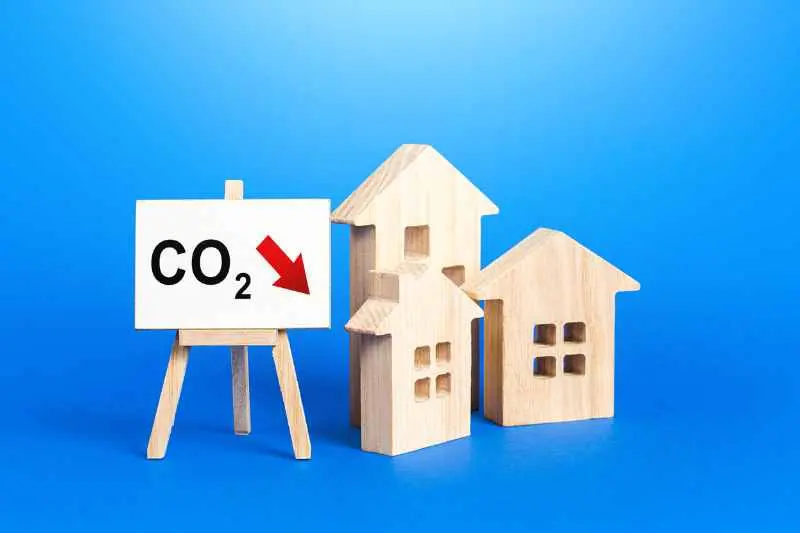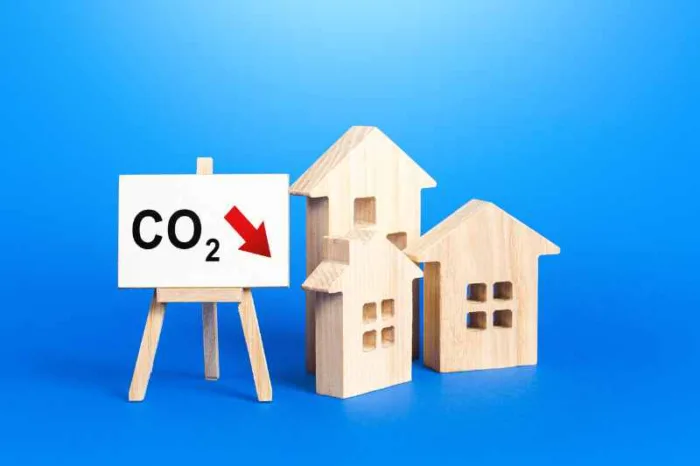Key takeaways
- Real estate decarbonization mandates are laws that require buildings to cut down on carbon emissions and meet new energy efficiency guidelines.
- Local law 97 requirements for New York City that update building codes to be more energy efficient have been passed with the intention of reducing the city’s carbon emissions.
- Risks of decarbonizing real estate include expensive installation and upfront costs. Meanwhile, rewards include a more appealing property to residents, lower costs in the long run, and possible tax benefits.
- Ways to decarbonize real estate include utilizing AI, implementing smart technology, and solar windows.

As climate risks become more and more credible around the world, industries such as the real estate sector are under increasing pressure to reduce their carbon footprint. Real estate decarbonization mandates are predicted to only become more and more popular as time goes on.
As a result, this will change the entire real estate ecosystem. These mandates will affect both properties currently being developed and properties that already exist. As a property manager or developer, you will likely have to comply with energy efficiency guidelines to become a sustainable building.
In this post, we’ll first review what real estate decarbonization mandates are. Next, we’ll provide an overview of the risks and rewards of decarbonization.
This post:
- What are real estate decarbonization mandates?
- What is local law 97 decarbonization?
- The risks and rewards of real estate decarbonization
- How do you decarbonize real estate?
What are real estate decarbonization mandates?
Real estate decarbonization mandates are laws and regulations intended to reduce the amount of greenhouse gas emissions from buildings both in terms of construction and their daily operations. It’s an important step in fighting climate change.
What is the difference between net-zero and carbon-neutral?
Net-zero real estate and carbon-neutral are terms that you’ll likely encounter when looking to reduce your property’s carbon emissions.
Their differences are as follows:
- Net-zero. A company or building achieves net zero when they remorse the same amount of greenhouse gasses that they produce.
- Carbon-neutral. To be considered carbon-neutral, all a company or property must do is not increase their carbon emissions. Gases such as methane and nitrous oxide are often not included.
What are the three scopes of carbon emissions?
When it comes to reducing your building’s carbon emissions, you’ll likely hear about carbon emission scopes.
There are three scopes, and they are somewhat distinct:
- Emissions that are directly produced by a building or company, such as the burning of fuel or other harmful chemicals.
- Emissions that are indirectly produced by a building or company, such as the energy a building utilizes.
- Indirect emissions are not produced by a building or company but supported by them. For example, this includes buying and using products that are not environmentally friendly or supporting companies that produce carbon emissions.
What is local law 97 decarbonization?
Local law 97 (also known as LL97) is a new law (as of 2019) that was passed in New York City and has gone into effect as of 2024. Local law 97 emissions limits state that both new and existing buildings of a certain size (over 25,000 square feet) must meet updated requirements that will reduce their greenhouse gas emissions, energy consumption, and overall carbon footprint. Any commercial real estate or multifamily properties that don’t meet these sustainability requirements are subject to harsh fines. The intended result of local law 97 is that emissions will be cut by at least 40% by 2030 and 80% by 2050.
It’s worth paying attention to the effects of local law 97, as similar laws are likely to be passed around the country.

The risks and rewards of real estate decarbonization
Global warming is not going anywhere anytime soon. As a result, all signs point to a low-carbon future for the real estate industry. While this will result in new financial challenges for many real estate owners, there are also a number of rewards when it comes to renewable energy and climate change mitigation efforts.
Risks of decarbonization include:
- Installation of eco-friendly policies and hardware can be costly and time-consuming.
- You will have to update staff on new guidelines.
- The initial cost of reducing emissions might be high.
Rewards of decarbonization are:
- An energy-efficient property will save you money in the long run.
- Residents and tenants are more attracted to environmentally friendly buildings.
- Depending on your state, you may receive tax benefits for going green.
- Building decarbonization allows for more innovation in your building’s design.
How do you decarbonize real estate?
There are countless ways that you can decarbonize your building and switch over to green living apartments and commercial buildings. However, not all of these methods will work for every property type. Furthermore, decarbonization doesn’t take place overnight. It’s a gradual process that takes time and proper planning to properly implement.
Four of the most innovative decarbonization methods are:
Learn what sustainable is and how it can help beat climate change:
1. AI regulation
AI is becoming increasingly popular when it comes to planning and coordinating decarbonization for buildings. Artificial intelligence usually takes the form of software that makes it relatively easy to download and operate in just about any environment. From there, all you have to do is feed it data and follow instructions.
AI can be used to:
- Track your building’s current emissions.
- Brainstorm new strategies that will reduce your property’s emissions.
- Inform you of increases or decreases in energy efficiency.
- Monitor and control smart technology that you utilize in your building.
2. Smart technology
Smart tech is a lot more than just fun and easy to use; it can also help your building meet your energy efficiency goals.
Energy efficiency is a big deal when it comes to meeting your real estate decarbonization mandates.
The most energy-efficient smart technology includes:
- Thermostats. Being able to accurately regulate and reduce heating and cooling costs across your building can have a big impact on the emissions it produces.
- Lights. Smart lights that dim or switch off when nobody is present in a room are a great way to save energy.
- Washing machines. Smart washing machines that conserve and regulate water usage can have a big environmental impact.

3. Solar windows
You’ve probably heard of solar panels, but did you know that solar windows can produce 60% more energy?
Solar windows are a particularly innovative way to decarbonize big office buildings with a lot of windows. The only catch is that they can cost up to 20% more than a regular window. This might sound expensive on paper, but when designing and constructing a building from the ground up, this method might still be more cost-effective (and energy-efficient) than installing solar panels along a building’s roof.
4. Heat pumps
As opposed to oil-based heating methods, heat pumps are a viable solution that will help you reduce your scope 2 and 3 carbon emissions.
Heat pumps work by outsourcing heat from the air or ground and pushing it up through your building or home.
Heat pumps run off electricity, and while this can be costly, you won’t have to worry about paying for oil or gas anymore. As an added bonus, heat pumps can act as a humidifier for your building.







